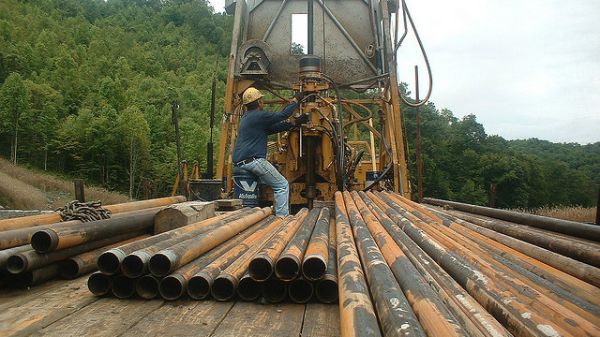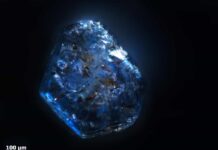
GEOLOGISTS have used a technique developed at Curtin University to determine magmatic fluids came up from the earth’s mantle repeatedly over the past 1600 million years, depositing minerals along a fault line in the Gascoyne region.
Geological Survey of Western Australia researcher Dr Simon Johnson told the Geological Survey Open Day earlier this year the fault had been active 1600, 1375, 1220 and 1000 million years ago.
“Each time that fault gets reactivated there are hydrothermal fluids which percolate through that rock system—they cause alterations and they cause alteration of the ore deposit,” he said.
He said the usual analysis method, by which a rock sample was crushed before analysis, had made it impossible to date when the various minerals present had first been deposited.
However, Professor Birger Rasumussun’s technique, which involves mounting extremely thin slices of rock on a slide, meant small mineral crystals could be identified and individually dated in situ.
Dr Johnson says they applied the technique to a diamond drill core from the Abra deposit.
This is the biggest known mineral deposit in the Capricorn Orogen, which is a deep margin between two former tectonic plates.
He said Abra is a huge lead-zinc deposit, with accessory gold and silver, which is completely covered by younger rocks.
It was detected in a magnetic survey, confirmed by drilling in the early 1980s, and is now a mining lease.
Samples dished up as ultra thin disks
The deposit’s owner, Abra Mining, provided the researchers with drill cores from which they sampled mineralised zones.
Using Prof Rasmussen’s technique they, inspecting them for phosphate minerals like xenotime or monazite which they drilled out as 3mm disks.
They mounted these on tape, encased it in an epoxy glue and placed it in a Sensitive High Resolution Ion Micro Probe (SHRIMP) machine.
This allowed them to fire oxygen ions at the grains of xenotime or the monazite.
The oxygen ions evaporate part of the xenotime or the monazite which they fed into a Faraday collector.
This dated the xenotime grains by measuring various isotope ratios of uranium, thorium, lead and intermediate products.
While it sits at the junction of the former Yilgarn and Pilbara tectonic plates, both of which are rich in minerals, the orogeny has very few working mines.
Dr Johnson said two Curtin University PhD students will apply the new method in an attempt to locate more prospective areas of the orogeny for mineral explorers.
Notes:
Dr Johnson is the Geological Survey of Western Australia’s Proterozoic Orogens Terrane Custodian and Project Manager for the Capricorn Province.
Reference:
Jian-Wei Zi, Birger Rasmussen, Janet R. Muhling, Ian R. Fletcher, Alan M. Thorne, Simon P. Johnson, Huntly N. Cutten, Daniel J. Dunkley, Fawna J. Korhonen. In situ U–Pb geochronology of xenotime and monazite from the Abra polymetallic deposit in the Capricorn Orogen, Australia: Dating hydrothermal mineralization and fluid flow in a long-lived crustal structure. DOI: 10.1016/j.precamres.2015.01.010
Note: The above post is reprinted from materials provided by ScienceNetwork WA. The original article was written by Geoff Vivian.










